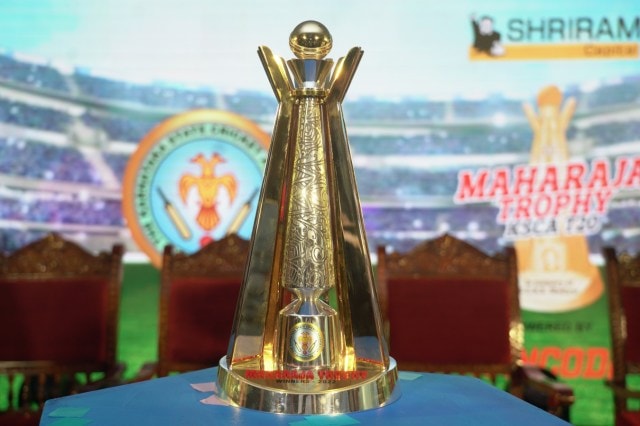ARTICLE AD BOX
 Maharaja Trophy. (Photo credit X)
Maharaja Trophy. (Photo credit X)
The recently concluded Maharani T20 Cup introduced a new net relative run rate method (NRRR), a new method to replace the existing net run rate (NRR) method in evaluating the authority of match-wins. Following its success, the host organisation Karnataka State Cricket Association implemented the NRRR method even in the Maharaja T20 Cup. The NRRR method was created by Keshav S Kolle (BCCI Panel Umpire from Karnataka) and V Jayadevan, who gave cricket an alternate version of Duckworth-Lewis-Stern method called the VJD method, which is used by BCCI in domestic tournaments.
What is NRR?
Net run-rate. It was introduced during the 1992 World Cup to separate teams that were level on points. In multi-team tournaments like the World Cup or IPL, it has often come down to NRR in recent times to dictate the fate of teams from qualifying to the knockouts. Teams, which often get to play the last game in a multi-team tournament, usually get an advantage in knowing beforehand what they need to qualify. For example: A team may be required to chase a target in a particular over to qualify or a team just needs to avoid a defeat by a certain margin to qualify. In IPL, during his time as captain of Chennai Super Kings has often spoken about the need to keep an eye on NRR when they are losing. The logic is even if they lose, don’t lose by a big margin that the NRR comes back to bite.
But there have been problems with how it is calculated. NRR is calculated by how fast a team scores compared to how fast they’ve been scored against. In multi-team tournaments, NRR looks at the overall rate of scoring and conceding runs across all the games. But the NRR doesn’t take into account wickets lost. Even if you win a game, there is no guarantee that your NRR is on the positive side. For example, a team that wins by a one-wicket margin can end up with a higher NRR than a team that chases down a big target by more wickets in hand. In short, it doesn’t matter how many wickets are lost, it just factors the overs that were left in the chase.
For example: In a T20 match, Team A is all out for 80 runs and Team B wins the game by making 81/9 in 10 overs, the NRR for Team A will be -4.10. And even though it is a marginal win for Team B, its NRR becomes +4.10. In a multi-team T20 tournament, for Team A to overcome a NRR deficit of 8.2, it has to win by a margin of 200+ runs in its next match. In many such cases, overcoming such deficits have proven to be an impossible task.
How different is the NRRR method?
What NRRR is doing is, it is also adding wickets to its calculations. According to Kolle and Jayadevan, it is more balanced than the existing method. Citing the aforementioned example, Kolle says what the net relative run-rate (NRRR) would have provided. “As per the proposed method the RRR values when Team B scores 81/9 in 10 overs will be -0.088 and +0.088. And Team A will now have to overcome a deficit of mere 0.176, which in a T20 match requires a victory with a win margin of 17+ runs, which is very much possible.”
There is a huge difference between the two outcomes. Kolle explains the rationale behind it: “If we look at the reason for such a difference between the two methods, it is the base that is considered to do the calculation. As per NRR, since wickets get ignored, just looking at the overs, in 10 overs, Team B was expected to score 40+ runs to be on par with achieving a target of 81. However, Team B scored 81 runs in overs, which is 41 more than what was expected and it took the NRR to +4.10. But the NRRR method, which also considers the wickets, we look at either the VJD or DLS par score at the end of 10 overs for the loss of 9 wickets. In that scenario, the par score happens to be 73. So as per NRRR, Team B which has scored 81, has scored just 8 runs more than what was expected. Thus the deficit resulting is small and a fair chance is given to Team A to come back into the tournament,” Kolle explains.
On the back of using the NRRR method in these two tournaments, Kolle is optimistic that the BCCI would take feedback and study this concept as well. While the entire cricket world uses the DLS method, in 2007 the BCCI introduced the VJD method. The VJD method was presented to the ICC as well but it rejected it saying the DLS doesn’t have any significant flaws.



.png)
.png)
.png)

























 English (US) ·
English (US) ·